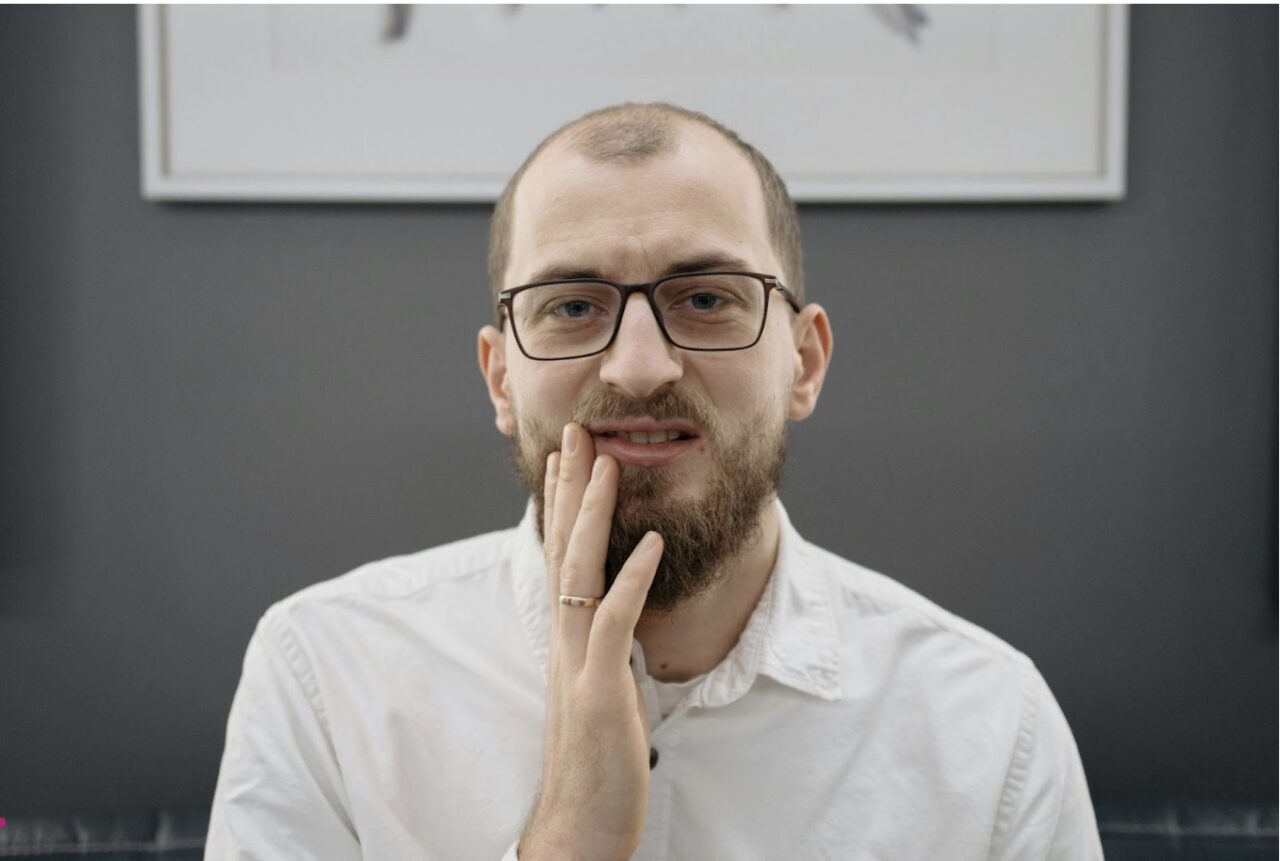By: John Crawley, PT, DPT, OCS
The nature of TMJ related pain can be complex. Often manifesting from a combination of bio mechanical and behavioral factors. Based on a synthesis of peer-reviewed research and systematic reviews, the top five contributing factors or management components for TMD-related pain are:
- Muscle Disorders (Myofascial Pain): This is one of the most common causes of TMD and unilateral pain, characterized by pain in the muscles of mastication (chewing) and potentially referred pain to other areas of the head and neck.
- Intra-articular Disorders (Disk Displacement): Derangement of the articular disk within the TMJ, with or without reduction, can cause joint pain, clicking, and limited mouth opening.
- Parafunctional Habits/Oral Behaviors (OBs): Common daily habits such as teeth clenching (bruxism), muscle tensing, and excessive gum chewing can create microtrauma and muscle overuse, significantly contributing to pain.
- Cervical Spine Dysfunction: Pain or dysfunction in the neck region is often co-present and can refer pain to the temporomandibular region.
- Psychosocial Factors: Conditions like chronic stress, anxiety, depression, and poor sleep quality are frequently linked with chronic TMD.
A comprehensive, multidisciplinary approach that is both conservative and reversible is the gold standard for initial management. Physical therapy, which includes manual therapy and therapeutic exercises (TE), has been consistently supported in peer-reviewed literature for its effectiveness in reducing pain and improving maximum mouth opening (MMO). Specifically, the combination of manual therapy on the TMJ/cervical region and therapeutic exercise appears to be crucial for the long-term maintenance of desirable effects on pain and mouth opening. Furthermore, patient education and self-management strategies—such as eating a soft food diet, practicing good sleep hygiene, and actively avoiding harmful oral behaviors—are considered a necessary first step that empowers the patient and supports the long-term success of other physical interventions.
- Manual Therapy (MT):
- Description: Hands-on techniques applied by the therapist to the temporomandibular joint (TMJ), masticatory muscles, and often the cervical spine. This includes joint mobilization where the jaw is moved by the therapist in a variety of ways to improve jaw range of motion and soft-tissue techniques (e.g., myofascial release, dry-needling, or trigger point therapy) to reduce muscle tension and pain.
- Therapeutic Exercise (TE):
- Description: Active programs focused on restoring normal jaw function, muscle strength, and coordination. Exercises typically include stretching, isometrics (for muscle strengthening), and coordination exercises (to guide the jaw into a proper, pain-free opening and closing pattern).
- Patient Education and Self-Care:
- Description: Educating the patient on the causes of TMD and teaching self-management techniques. Key components include:
- Resting Jaw Position: Keeping the teeth slightly apart, with the tongue on the roof of the mouth.
- Diet Modification: Avoiding hard, chewy, or crunchy foods.
- Habit Modification: Avoiding clenching, chewing gum, or leaning on the jaw
- Etiology and prognosis: Informing the patient about the time course of the problem and what factors are contributing to their jaw pain.
Click Here to schedule your next appointment with the experts at MEND
References
- Herrera-Valencia V, Ruiz-Muñoz M, Argüelles-Valencia A, et al. Efficacy of Manual Therapy in Temporomandibular Joint Disorders and Its Medium-and Long-Term Effects on Pain and Maximum Mouth Opening: A Systematic Review and Meta-Analysis. J Clin Med. 2020;9(11):3404.
- Armijo-Olivo S, Pitance L, Singh V, Neto F, Thie N, Michelotti A. Effectiveness of manual therapy and therapeutic exercise for temporomandibular disorders: systematic review and meta-analysis. Phys Ther. 2016;96(1):9-25.
- Gębska M, Gębski A, Nitecka-Buchta A, Czuba K. Evaluation of the efficacy of manual soft tissue therapy and therapeutic exercises in patients with pain and limited mobility TMJ: a randomized control trial (RCT). Head Face Med. 2023;19(1):42.
- Armijo-Olivo S, Rapp E, da Costa BR, Thie NM. Systematic review of the effectiveness of physical therapy interventions for temporomandibular disorders. J Oral Rehabil. 2006;33(5):387-396.
- Craane B, de Wijer A, Visscher C, Twisk J, de Baat C. The impact of education and physical therapy on oral behaviour in patients with temporomandibular disorder: a preliminary study. J Oral Rehabil. 2021;48(1):31-38.
- Gremillion HA, Klasser GD, editors. Temporomandibular Disorders: Priorities for Research and Care. Washington (DC): National Academies Press; 2020. Caring for Individuals with a TMD. Available at: https://www.ncbi.nlm.nih.gov/books/NBK557986/.
- Michelotti A, de Kanter RJ, Visscher CM, et al. Effectiveness of Manual Therapy Approaches on Pain, Maximum Mouth Opening and Disability in Temporomandibular Disorders: A Systematic Review of Randomised Controlled Trials. Life (Basel). 2023;13(2):292.
- Armijo-Olivo S, Pitance L, Singh V, et al. Effectiveness of Manual Therapy and Therapeutic Exercise for Temporomandibular Disorders: Systematic Review and Meta-Analysis. Phys Ther. 2016;96(1):9-25. (Used for Snippet 1.4/1.5)
- Qu J, Qian Y, Lu Y, et al. Efficacy of manipulation and therapeutic exercise applied to the neck region of patients with temporomandibular disorders: A systematic review and meta-analysis. Medicine (Baltimore). 2023;102(5):e32857.
- Rizzatti-Giraldi R, Silva J. Systematic Review of the Effectiveness of Exercise, Manual Therapy, Electrotherapy, Relaxation Training, and Biofeedback in the Management of Temporomandibular Disorder. Phys Ther. 2006;86(7):955-973.
- Sette Vieira L, Mendes Pestana PR, Miranda JP, Soares LA, Barbosa Filho VC. The Efficacy of Manual Therapy Approaches on Pain, Maximum Mouth Opening and Disability in Temporomandibular Disorders: A Systematic Review of Randomised Controlled Trials. Life (Basel). 2023;13(2):292.
- Sete Vieira L, Pestana PRM, Miranda JP, Soares LA, Barbosa Filho VC. The efficacy of manual therapy approaches on pain, maximum mouth opening and disability in temporomandibular disorders: a systematic review of randomised controlled trials. Life (Basel). 2023;13(2):292. (Used for Snippet 2.6)
- American Academy of Family Physicians. Temporomandibular Disorders: Rapid Evidence Review. Am Fam Physician. 2023;107(1):60-61.
- American Academy of Family Physicians. Diagnosis and Treatment of Temporomandibular Disorders. Am Fam Physician. 2015;91(6):378-385.
- Armijo-Olivo S, Rapp E, da Costa BR, Thie NM. Systematic review of the effectiveness of physical therapy interventions for temporomandibular disorders. J Oral Rehabil. 2006;33(5):387-396. (Used for Snippet 2.7)
- Wright EF, North SL. Temporomandibular disorders: A review of the literature with implications for the physical therapist. Phys Ther. 2006;86(5):710-725.
- D’Incau E, Maes M, De Rop K, Vleminckx F, Hellemans G. Managing temporomandibular disorders (TMD) by integrating exercise therapy into therapeutic patient educational programs: why. J Dentofacial Anom Orthod. 2011;14(2):206-218.
- Maixner W, Diatchenko L, Wadhwa S, Fillingim RB. Systematic Review of Temporomandibular Disorder Treatment Guidelines. J Am Dent Assoc. 2020;151(12):951-965.
- Pihut M, Nitecka-Buchta A, Wieczorek M. Physical Therapy for Temporomandibular Disorders: Evidence-Based Improvements and Enhancements for Diagnosis and Management. Front Oral Maxillofac Med. 2021;3:25.
- Hruska J, O’Neill C. Topic Brief: Temporomandibular Disorder Treatment Guidelines. Agency for Healthcare Research and Quality (US); 2020. Report No.: 20-EHC019. Available at: https://effectivehealthcare.ahrq.gov/products/temporomandibular-disorders-treatment/topic-brief.

